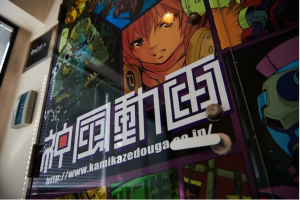What You Need to Know:
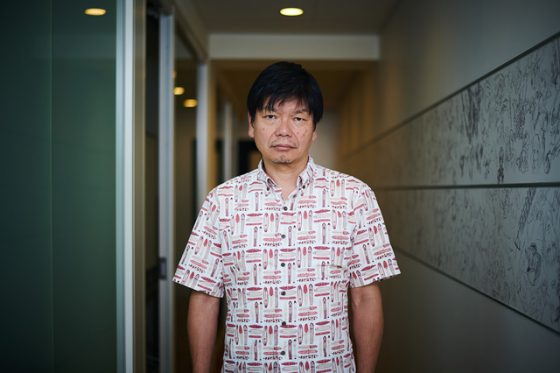
- The wonderful team over at Tokyo Otaku Mode are back at it again with another great anime studio interview, and this time they had the pleasure of sitting down with bones’ founder and CEO, Masahiko Minami. They discussedthe studio’s history from its origin to the present-day, as well as its production process.
- From Fullmetal Alchemist and Eureka Seven to Dragon Pilot: Hisone and Masotan and My Hero Academia, bones, a studio started in 1998 by former Sunrise employee Masahiko Minami has always delivered new anime to the world. Their work has continued to charm fans throughout the years.
- Why is bones’ work high quality and fascinating? Why do they continue to challenge different forms of expression? On behalf of Tokyo Otaku Mode, we present you with this exclusive 1-on-1 interview! Be sure to subscribe to Otaku Coin for more perks and anime interviews in the near future!
Source: Official Press Release
The Studio’s Beginnings: A Place Where We Can Work More Freely and On A Grander Scale
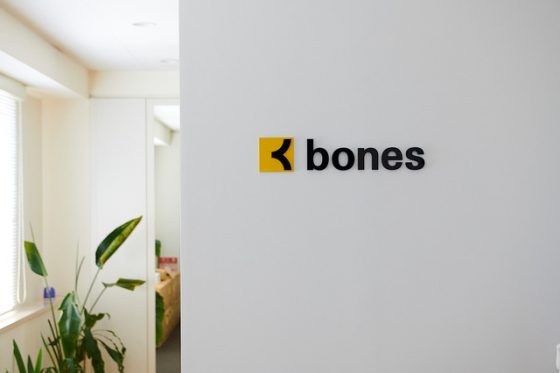
Tokyo Otaku Mode: Please tell us about how bones was started. You opened the studio in 1998, but was there an impetus for you to quit Sunrise and open your own studio?
Minami: There wasn’t really a decision made. I just went with the flow. I didn’t feel the desire to start my own business. I was around 36 or 37 at the time.
Tokyo Otaku Mode: That’s pretty young.
Minami: I guess so. It was right when the first half of Cowboy Bebop had finished airing on TV Tokyo and we were wondering what to do about the full series. (*1) I wanted to try new things on the next title with the staff of Sunrise animators I was working with at the time. Obviously, we could do it at Sunrise, but I wanted a place where we could work more freely and on a grander scale. I discussed things with the staff, which included Hiroshi Osaka (*2) and Toshihiro Kawamoto (*3), and we decided to make a new place.

I think there were other reasons, too, but none of them were big problems. The timing and our way of thinking that had come from working on titles from age 30 to age 36 or 37 just matched up. It was really hard, though.
Tokyo Otaku Mode: Did you have many hardships?
Minami: I was often asked, “What has been good about opening bones?” but I would always answer, “Nothing. It’s just hard.” In the beginning, none of the leasing companies would lend us anything. Just renting a single copy machine was really difficult. I couldn’t get a lease on a car, either. There’s a secondhand car shop in my neighborhood, and since I’m on good terms with the owner, I was able to buy a car. He had second-hand Toyota Starlets and Daihatsu Charades available for about 250,000 yen, which included the vehicle inspection, though I kept asking him to lower the price since I was in a bad financial state.
Tokyo Otaku Mode: Didn’t you feel any anxiety over your next job?
Minami: Not really (laughs). It was just finding a place, starting to work, and figuring out how to make our next title. First, we worked on the movie for Escaflowne as well as the Cowboy Bebop movie. We started by receiving work on two big titles from Sunrise, so during that time we started really building the company.
I was really blessed by the amount of help I received from the people around us, like the members of the production committees, the creators of the original work, the broadcast networks, and the agents.
One of our earliest works was Angelic Layer, a title from CLAMP, who are incredibly popular creators. Angelic Layer was published in the manga magazine Shonen Ace by Kadokawa Shoten (now known as KADOKAWA), and Shinichiro Inoue (*4) asked me to work on it.
As I worked on that title, I had a huge desire to work on something original, so I was thinking of that at the same time.
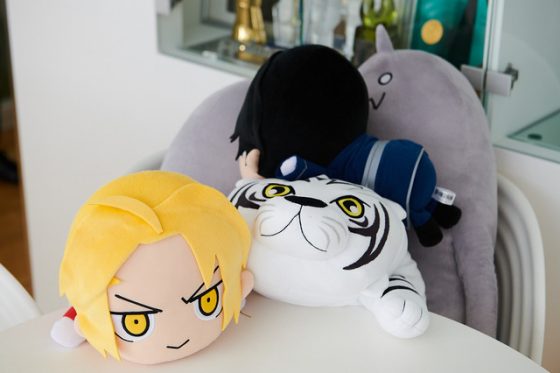
Tokyo Otaku Mode: You wanted to work on a grand scale, but after bones opened, you also worked on titles aimed towards kids, like Hiwou War Chronicles and shojo (girls’) manga.
Minami: We didn’t plan to make Hiwou a kids’ show and the story is actually pretty heavy. The characters were designed by Osaka, but we decided to go with a movable design for the animation.
A lot of our shojo manga work was done in collaboration with Hakusensha, like Ouran High School Host Club and Snow White with the Red Hair.
Tokyo Otaku Mode: You produced titles like Cowboy Bebop, Gundam 0083, and Escaflowne while at Sunrise. Stemming from that, bones has an image of making rather edgy titles, but actually, bones’ wide variety of titles is its strength.

Minami: Animation is one type of visual expression, and we decided on hand-drawn animation to express ourselves freely. Our beginnings lie in the realization that there’s no reason to stick to specific genres. We’re often told that we’re good at action series or that we have a lot of original titles, but that’s exactly why we believe in the vast extent of free visual expression that animation allows.
Minami: I’m always asked this, but there isn’t one I can point to. There are, however, titles that were turning points for me, like Cowboy Bebop’s movie. It’s a Sunrise title, but it was the title that started this company and it was a big thing to have fans around the world supporting us ever since.
*RahXephon* was a huge challenge, as it was an original title created by a brand new company. After that, there was WOLF’S RAIN, but a big turning point was Fullmetal Alchemist. Not only was it a grand undertaking, but it also aired nationally at 6 PM on Saturdays, a huge timeslot. It became incredibly popular overseas, too.
It’s the title that allowed me to meet Kouji Taguchi from Square Enix and Seiji Takeda from Mainichi Broadcasting. I worked in a team with Hideo Katsumata and Ryo Oyama, who were still at Aniplex, not Avex Pictures, where they are now. Fullmetal Alchemist is a title that was created through personal connections, not corporate ones.
Tokyo Otaku Mode: Eureka Seven is a huge title that’s pretty long.
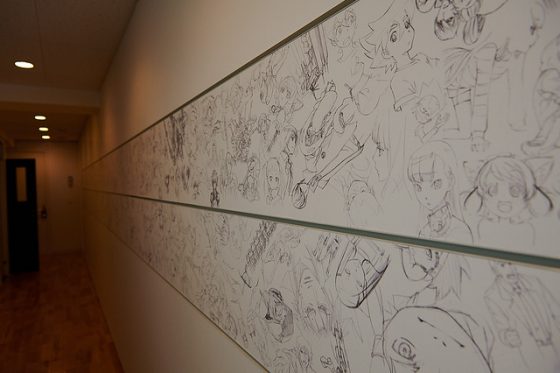
Minami: Eureka Seven is an original work that had 50 episodes in one year. It’s difficult to make titles on that scale, and it was broadcast at 7 AM on Sundays. Other than Sunrise, I don’t think that there are any other studios that have created original robots on such a scale.
1. Only 13 episodes of Cowboy Bebop aired on TV Tokyo in the spring of 1998. That fall, all entire 26 episodes aired on WOWOW.
2. Hiroshi Osaka was an animator and character designer, as well as one of bones’ co-founders. Some of his best-known works are Mobile Fighter G Gundam and Hiwou War Chronicles. He passed away in 2007.
3. Toshihiro Kawamoto is an animator and character designer, as well as one of bones’ co-founders and the current director. Some of his best-known works are Cowboy Bebop, Noragami, and Mobile Suit Gundam 0083: Stardust Memory.
4. Shinichiro Inoue is the CEO of KADOKAWA.
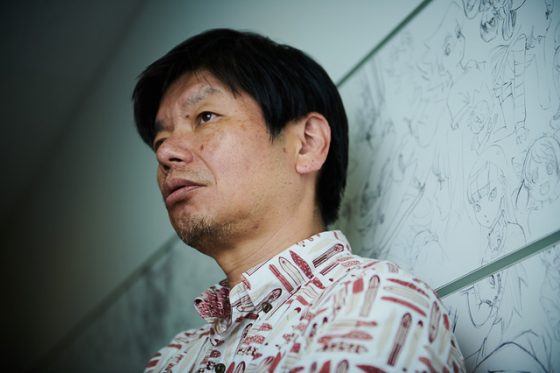
At Bones, Animators Can Release Their Creative Desires and Goals To The World
Tokyo Otaku Mode: What is the reason behind bones’ success?
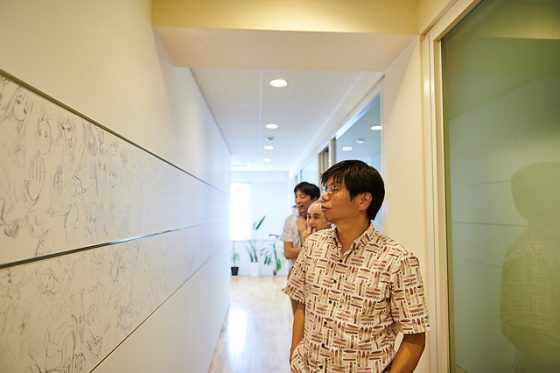
Minami: Are we successful? (laughs) We’ll reach our twentieth anniversary in October. If you line up all the titles we’ve made over that period, it’s around sixty. I think that’s wonderful.
Tokyo Otaku Mode: That’s an amazing number.
Minami: There are titles that became hugely popular, some that were kind of popular, and some that didn’t make waves at all, but that’s just a result. Fans liked each title and accepted them all. It might be a little strange for me to say this, but I believe that those sixty titles reached our audience and showed them different points of view, as well as the charms and potential of animation. That’s something my company simply and honestly does.
Tokyo Otaku Mode: There might have been a misunderstanding over the word “success.” It wasn’t about the size of the company, but rather that all of your titles have bones’ unique touch in them, as well as the impression that your filmography is full of titles that everyone knows.
Minami: I’m happy to hear that. There’s a 17-minute video that lists all 60 titles. It was screened at an event in Germany, which was really fun. Each title gets about 10 to 20 seconds. I got excited with the audience when I saw them listed like that. I think it’s really important that each and every title has been accepted by audiences.
Tokyo Otaku Mode: Why are you able to make such excellent titles? How is bones filled with such talented production staff?

Minami: Isn’t it because there’s the possibility to do whatever you want? (laughs) Animators and directors want to create anime. I think the reason they work with us is because they think they can release their creative desires and goals to the world.
For example, Takuya Igarashi is a director who always wanted to work on an original robot anime. First, he worked on Ouran High School Host Club and Soul Eater, both adaptations, before he created the famous title, Star Driver.
As he worked on our titles, he was able to interact with staff who work in action and robot titles who helped plan how to make his next title. If it would take 6000-7000 videos to make, he asked how to use them so they would reflect in the animation. From the beginning, he planned the art style and coloring to show how the animation would be and shared it with the producers. I think he was able to put together a really good team.
I can already hear the directors telling me to shut up (laughs). I do feel like I’ll keep making titles like that, though.
I believe the production staff feels the same way. That accumulation of tasks is how a title comes to fruition.

Tokyo Otaku Mode: How do you decide and plan on a title?
Minami: We discuss what the production team and the staff want to create. The most important thing in planning is to figure out what kind of title we will want the audience to see in one or two years when it will air.
The producer decides whether they want to make an original story or an adaptation, and what kind of story they want to tell. When the planning begins, we start creating it while thinking of what’s missing or where to add things like drama.
Tokyo Otaku Mode: Is there anything that you hear often from directors or animators?
Minami: It depends on the title, though I often get asked, “What are you talking about?” When we were working on Mob Psycho 100, I asked the director, Yuzuru Tachikawa, and the character designer, Yoshimichi Kameda, to make the animation have a sense of luxury. Kameda responded with, “Luxury?!” (laughs).
Since I said that, in the anime whenever there is a release of psychic powers, it sparkles. “Wow, it really does feel luxurious.” That’s not actually what I wanted (laughs).
I talk a lot with the directors on original stories, too.

Tokyo Otaku Mode: After doing this for many years, can you tell what titles will be hits?
Minami: We don’t aim for that. It’s kind of like our policy. However, the creators are our staff, so I think the production areas and each separate studio within bones each have differences regarding that.
Tokyo Otaku Mode: How about the producers?
Minami:I think I’m naggy. I often ask them a lot about balance, like about the budget, what medium to use for the title, and how to release it. Even if I say I want to make something original, that alone won’t make anyone invest. We make TV shows, but there’s also online streaming, OVAs, and movies. We need to make it clear how much each title will cost and how the budget will be distributed. Directors and producers assemble the entire title, so first, as a producer, we need to decide on what kind of story we want to make.
Each Separate Studio Within the Company Creates Unique Titles. That’s What’s Interesting
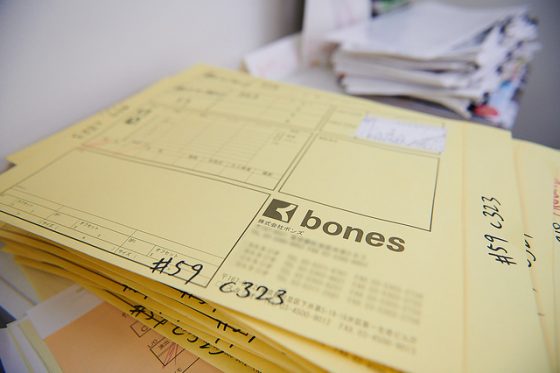
Tokyo Otaku Mode: Please tell me about the organization of the studio.
Minami: We have five studios, named from A to E. Each studio is in charge of separate titles. The newest studio, E, is currently in charge of Psalm of Planets Eureka Seven: Hi-Evolution 1 (*5), an incredibly long-running movie series, so we created the studio just for that title.
Each studio works on a different title annually and the staff also changes, so we thought we couldn’t insert the Eureka movies into the existing system and instead added a new studio.
Tokyo Otaku Mode: Are the studios around the main building?
Minami: Most of them are here. A, B, C, and D are here, but E is elsewhere. The first floor of the main building holds studios A and D and the second floor has B and C.
It’s one company, but each studio decides on its own title which in turn is made with the producers’ characteristics. I think that’s interesting, so we plan on continuing to work this way.
Tokyo Otaku Mode: Does the art style or preferred tastes change depending on the studio?
Minami: There are differences in the animation that the producers and directors aim for. D studio is currently headed by Mari Suzuki, a female producer, and they’re working on Bungo Stray Dogs. It’s an anime that definitely has some femininity to it. For example, if Bungo Stray Dogs were to be created by A studio, it would probably be a different anime. In the end, isn’t that what it’s like? Even if it’s based on the same story and planned the same way, having it become an entirely different work based on who makes it is really interesting.
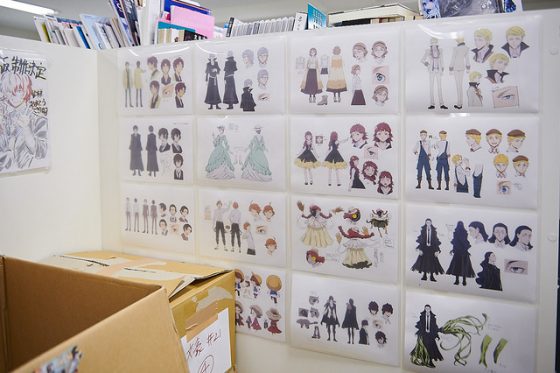
Tokyo Otaku Mode: What do you think about the international reach of CGI animation?
Minami: Our titles are mostly hybrids. We use CGI that is close to hand-drawn animation. For cars, scenes of minor characters, or parts that might take a long time, we’ll use CGI. In Dragon Pilot, the planes are made with CGI.
Toy Story came out in 1995 and Ratatouille in 2007, and they were both shocking. When I saw that mouse running around the CGI streets of Paris, I thought, “We’re in trouble.” I consider it the moment that CGI overcame its barriers. CGI eroded away the freedom that hand-drawn animation has. There was a period that I thought there was no way hand-drawn animation could continue to be produced.
However, since about ten years ago, I’ve been going to anime convention overseas, so I’ve been able to see that Japanese hand-drawn animation is popular. I’ve seen the audience’s passion, their feelings towards the characters, and that the convention attendees rise in number each year. It made me realize that people still like our hand-drawn animation and still want it. That really reassured me. Actually, it made me want to continue challenging what we could do with it.
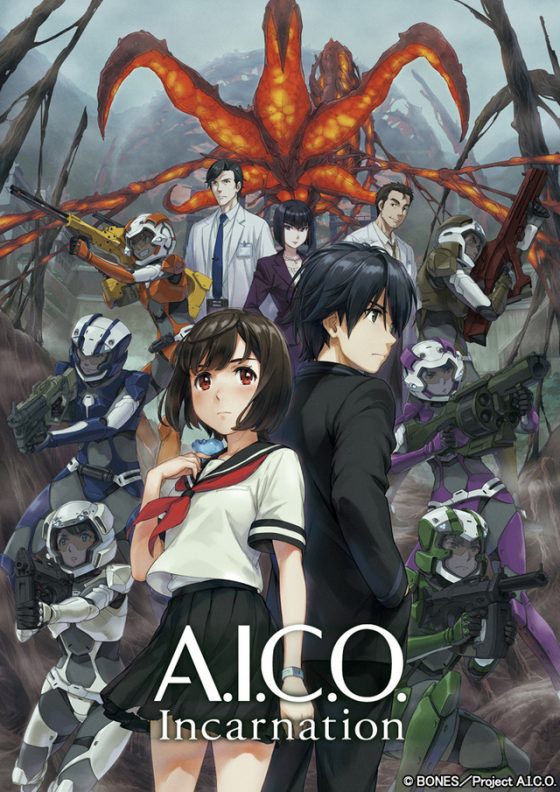
Tokyo Otaku Mode: Anime is loved and is only getting more popular.
Minami: It really is. We’re working on A.I.C.O. Incarnation for Netflix and other international companies are streaming it as licensees. People who have never seen a Japanese anime before can see them now, so if we’re able to make a few series that they like, it’s really fun and joyful for us.
Tokyo Otaku Mode: That kind of title becomes a success because of its creators. What do you think about the future education and retention of talented creators?
Minami: I think that the industrial-academic connection created by the Association of Japanese Animators and other similar programs must educate and train capable people. From the production point of view, I wonder if there is a system in place to properly support people who graduate school and go out into the world. I also believe we have to figure out the salary problem.
Tokyo Otaku Mode: You brought up salaries. I’ve often heard that it’s a difficult job, but that the salary gradually goes up. I’m sure there are still parts that are lacking, but do you think it will continue to get better?
Minami: All of our staff have gotten higher salaries, and the production budget has also gone up.
The problem is that the number of titles created by the entire industry has gotten way too high. When I see TV anime made by other studios, sometimes I think there are shots where they thought too much about how to simplify things.
Tokyo Otaku Mode: Like how to save time?
Minami: One of the demerits of Japanese animation is that it’s done on threes (*6). There is an industrial history of not wanting to spend money on the full 24 frames per second that Disney always did, so they would reduce the number of frames and freely use various methods like pulling the cel or background image away while filming or use panning by keeping the camera in place and moving the image.
I feel like we might have gone a little too far with that. In order to reduce labor, there’s been an increase in processes that don’t suit the production. I don’t think it’s a problem of budget, but a lack of human resources. They don’t finish according to schedule. That makes a really sad anime.
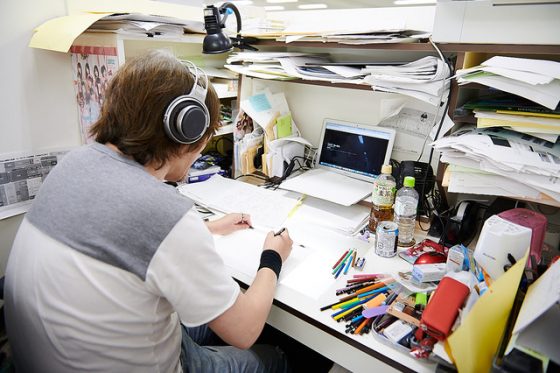
Tokyo Otaku Mode: They would be able to do it if they had people, but they don’t.
Minami: Because they don’t have the necessary staff, they try leaving it up to one person. That’s sad. Our company works extremely hard on our titles. Since the production team and the staff work very hard on them, I think it’s going to be difficult if we don’t collectively lower the number of titles a little bit.
*5. Psalm of Planets Eureka Seven: Hi-Evolution 1, released in 2018, is the third film in a series.
*6. Animation is normally filmed at 24 frames per second. Filming it on threes refers to the act of using one drawing for three frames, leading to 8 different drawings being used in 1 second.
Is There a Possibility of Working With Overseas Staff?

Tokyo Otaku Mode: You brought up education earlier. There’s been an increase of people coming in from overseas to study at Japanese technical schools.
Minami: That’s what I’ve heard. There are schools that have student bodies made up of 30% international students. There might be visa problems that stem from that, but the number of people coming from overseas will continue to increase.
Tokyo Otaku Mode: That’s also happening in anime production, right?
Minami: We have some non-Japanese people working with us, including freelance. We’ve reached an era where you can work over the internet, right? I’m thinking of creating an environment where people from all around the world, like the United States, France, or China, can work with us. But there are problems that come with that. The scariest thing is work not being completed since we can’t physically go and get it.
Tokyo Otaku Mode: You can’t scold them or go and get it yourself.
Minami: If I really have to, I’ll run to Narita and get on a plane (laughs). Then I’ll find their house on a map and go. Obviously, that’s not realistic.
If we can clear that hurdle, then I think we can make some interesting stuff with the many people overseas who love Japanese animation.
Tokyo Otaku Mode: Basically, if you can trust them, then you’d like to work with them.
Minami: I’d like to. When I talk to different staff members and designers, where they grew up, what sort of sights they have seen, and their environments all lead to different art styles. They way they see things and how people move is different. For example, Japanese people, British people, and Americans all move differently. Naturally, when people draw what they see, it’s pretty interesting.
Tokyo Otaku Mode: Does their art change?
Minami: It does. The colors do, too. The scenery changes as well, but the colors are the biggest change.
Tokyo Otaku Mode: You can tell when the use of colors seem French or American, for example.
Minami: That’s because of the air. Even in Japan, the colors used by people from Tohoku (northeastern Japan) and Chugoku (northwestern Japan) are entirely different. You see the differences in the colors of the air and the buildings. You notice that specifically because you live there.
Support From Fans Is Connected To Their Next Work
Tokyo Otaku Mode: What can fans do for anime studios? What should they do if they want to support a particular title?
Minami: What’s important for a title is for it to be watched. For example, how many times it’s streamed online or the TV ratings. Many of bones’ titles are popular, so it makes us want to stream coming titles. That connects to purchase prices and future contracts. Of course, it’s also great when people buy the Blu-rays. It makes me happy when I see lots of fans cosplaying characters from our titles at conventions.
Tokyo Otaku Mode: If a staff member participates in a convention, does telling them that you liked their work mean anything?
Minami: It does. It makes me really happy! When I go to events and someone tells me that they saw one of our series, I simply feel delighted. Please, feel free to approach me!
Tokyo Otaku Mode: Finally, please give the fans a message from bones.
Minami: It’s been really great to continue being able to make anime for the past 20 years as bones. I feel like the past twenty years have been good. Starting with our 21st year, I want bones to be able to show everyone new anime that are different from what we’ve made over the past twenty.
It’s true that we were able to create this environment thanks to fans not just in Japan but around the world. It’s incredibly important that the circumstances allowing people to see Japanese anime continue to expand, so I want to keep making titles that surprise and delight people. Please look forward to that.

